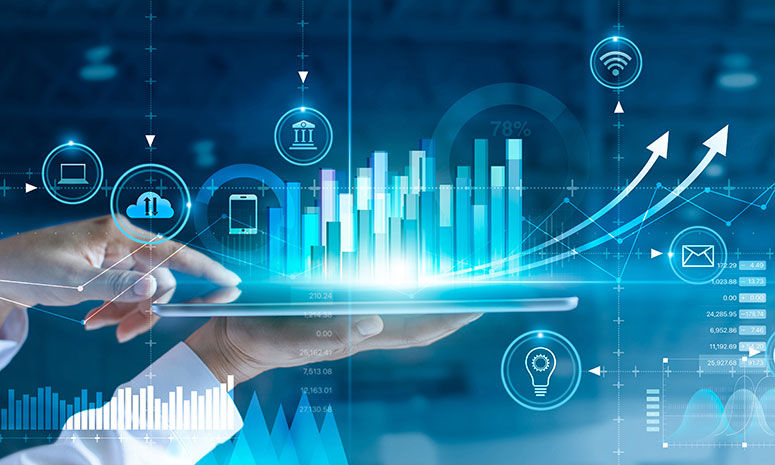Harnessing the Power of Data: An In-Depth Exploration of Data Analytics
- Purva Yadav

- May 14, 2024
- 4 min read

In today’s digital age, data has become the lifeblood of modern businesses and industries. The immense volume of data generated daily provides vast opportunities for insights and innovation. Data analytics, the science of interpreting raw data to derive meaningful conclusions, has become essential for informed decision-making. This blog explores the core concepts of data analytics, its importance, key methodologies, tools, and the transformative impact it has across various sectors.
The Importance of Data Analytics
Data analytics transcends simple data examination; it involves uncovering patterns, predicting trends, and making well-informed decisions. Organizations use data analytics to improve customer experiences, streamline operations, and gain competitive advantages. Across healthcare, finance, and other industries, data analytics offers critical insights that drive strategic initiatives and operational efficiencies.
Enhancing Decision-Making
Data-driven decisions replace guesswork with evidence-based strategies. Companies like Amazon and Netflix utilize data analytics to recommend products and content, customizing experiences to individual preferences. This level of personalization boosts customer satisfaction and loyalty, positively affecting revenue.
Predictive Capabilities
Using historical data, predictive analytics forecasts future events. In healthcare, it can predict disease outbreaks or patient admission rates, enabling proactive resource management. In finance, predictive analytics identifies potential market trends, guiding investment decisions.
Key Methodologies in Data Analytics
Data analytics involves various methodologies, each designed for specific purposes. Here are the primary techniques used in the field:
Descriptive Analytics
Descriptive analytics addresses the question, "What happened?" by summarizing past data. Techniques like data aggregation and mining help identify patterns and trends. Dashboards and reports present this data in an accessible format.
Diagnostic Analytics
Diagnostic analytics answers, "Why did it happen?" by delving deeper to understand the root causes of events. This approach involves drill-down analysis, data discovery, and identifying correlations, making it useful for pinpointing anomalies and underlying factors.
Predictive Analytics
As noted earlier, predictive analytics forecasts future events based on historical data. Common techniques include regression analysis, machine learning, and time series analysis. This method is vital for risk management and strategic planning.
Prescriptive Analytics
Prescriptive analytics provides recommendations for actions to achieve desired outcomes, answering, "What should we do?" This methodology employs optimization and simulation algorithms to suggest the best course of action. It’s extensively used in supply chain management and financial planning.
Essential Tools for Data Analytics
The effectiveness of data analytics relies heavily on the tools and technologies utilized. In the
industry, the following are a few of the most popular tools:
Python and R
Two strong programming languages that are frequently used in data analytics are Python and R. Python is preferred for its simplicity and versatility, while R is renowned for its statistical computing capabilities. Both languages offer robust libraries for data manipulation, analysis, and visualization.
SQL
Relational databases require Structured Query Language (SQL) to be managed and
queried. It’s crucial for extracting and organizing data stored in various database systems.
Tableau and Power BI
The two best tools for data visualization are Tableau and Power BI. They help transform complex data into interactive and intuitive visualizations, making it easier to communicate insights to stakeholders.
Hadoop and Spark
For big data analytics, Hadoop and Spark are indispensable. Hadoop’s distributed storage and processing capabilities, combined with Spark’s in-memory computing, allow for efficient handling of massive datasets.
The Impact of Data Analytics Across Industries
Data analytics applications are broad, driving innovation and efficiency in various sectors.
Healthcare
In healthcare, data analytics improves patient outcomes and operational efficiency. Data from Electronic Health Records (EHRs) and wearable devices can be analyzed to develop
personalized treatment plans and detect diseases early.
Finance
The finance industry heavily relies on data analytics for fraud detection, risk management, and customer segmentation. Real-time analytics enable quick decision-making, essential
for trading and investment strategies.
Retail
Retailers use data analytics to optimize inventory, forecast demand, and personalize marketing campaigns. By understanding consumer behavior, retailers enhance the shopping experience and boost sales.
Manufacturing
In manufacturing, data analytics enhances production processes and quality control. Predictive maintenance, powered by analytics, reduces downtime and operational costs by anticipating equipment failures before they occur.
Challenges in Data Analytics
Despite its benefits, data analytics faces several challenges:
Data Privacy and Security
The increasing volume of data raises concerns about privacy and security. Ensuring data protection and complying with regulations like GDPR is critical for maintaining trust and
avoiding legal issues.
Data Quality
The saying "garbage in, garbage out" underscores the importance of data quality. Inaccurate or incomplete data can lead to erroneous insights, undermining the effectiveness
of analytics efforts.
Skill Gap
The demand for skilled data analysts far exceeds the supply. Bridging this gap requires investment in education and training programs to develop the necessary expertise.
The Future of Data Analytics
The future of data analytics is promising, with advancements in artificial intelligence and machine learning driving innovation. Automated analytics, where machines perform complex analyses without human intervention, is becoming a reality. Additionally, the integration of real-time analytics will enable organizations to react instantaneously to
changing conditions, enhancing their agility and responsiveness.
Conclusion
Data analytics is a transformative force, turning raw data into valuable insights that drive decision-making and innovation. As technology evolves, harnessing the power of data will become increasingly crucial. By embracing data analytics, organizations and individuals can unlock new opportunities, improve efficiency, and stay ahead in an ever-competitive landscape. Whether in healthcare, finance, retail, or any other industry, the potential of data analytics is vast, paving the way for a data-driven future. For those looking to gain expertise in this field, enrolling in a best Data Analytics course in Navi Mumbai, Mumbai, Thane, DelhI, Noida and other cities can provide the necessary skills and knowledge to excel in this dynamic and essential discipline.



Comments